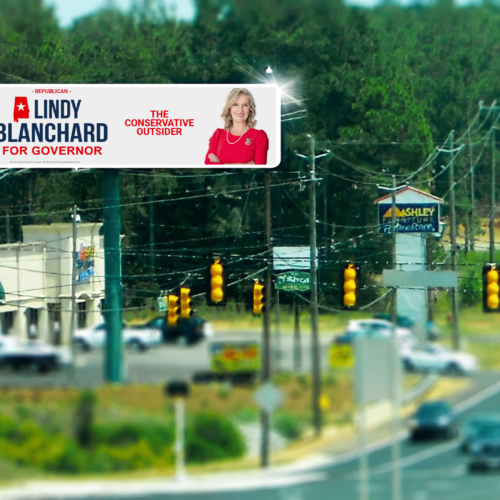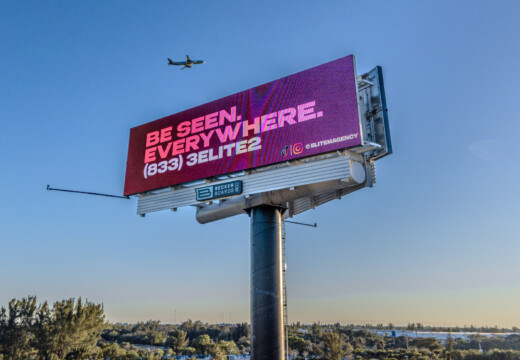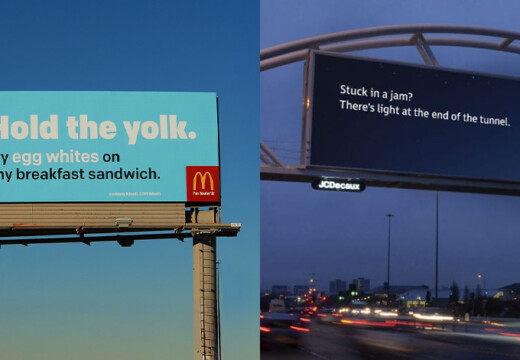
Webinar Recap: How Every Political Campaign Should Be Running Billboard Advertising
Elections matter, and if you want your candidate to have the best chance of coming out on top, you need to get the word out. Check out our webinar recap to learn how to run billboard ads for your political campaign.
Before long, it’ll be time to head to the polls.
That means it’s time to get the word out to potential voters – and that means putting the message in highly-visible places where voters can’t help but take notice.
Today, savvy campaigners understand the importance of billboard and out-of-home (OOH) advertising. But it’s not as simple as throwing up an ad; like anything else in a campaign, it needs to be done intentionally and intelligently if it’s going to work.
To help our audience, we held an engaging discussion on upgrading political campaigns with billboard advertising, with Blip’s own Andy Rocker (Director of Customer Success & Support) and Michael Eppich (Senior Account Manager) and special guest Jonathan Barbee (Founder and Executive Producer at Barbee Media Group).
Here’s a quick summary of what we talked about (keep reading to learn more):
- Political billboard design tips to make your ad stand out
- Common “Do vs. Don’t” principles
- Finding the optimal location strategy
- Political advertising stats from OAAA Harris Poll
- Rethinking the Funnel for Political Ads
On to the recap!
Design Tips: How to Build a Better Ad
Billboards are visual (naturally), which means design is everything – especially in campaign politics, where signs all tend to look the same.
You can stand out by following these proven principles:
- Less is more: keep the copy to just 7-10 words
- Use a logo and a clear, high-resolution headshot of the candidate
- Make sure the last name is prominently and easy to read
- Don’t be afraid to deviate a bit from the typical red/white/blue color scheme that everyone uses
- Busy is bad; declutter your billboard by not throwing a lot of components into the ad
If people can’t quickly get the gist of your message and who your candidate is as they drive by, the billboard won’t work.
Common “Do Vs. Don’t” Principles for Billboard Ad Success
Political campaigns are stressful enough without having to wring your hands over your billboard campaign.
That’s why Blip and Jonathan put together a handy list of what to do – and not to do – for your billboard campaign, especially if you run them through Blip.
Do:
- Have a clear and legible “Paid for by…” statement from a legitimate organization
- Promote a specific cause or candidate
- Check with your billboard specialist to learn which boards accept political advertisements
- Prepay your full amount ahead of time to ensure funds are available (no one wants their ad to go dark at an inopportune time)
Don’t:
- Submit negative or potentially controversial ads for approval
- Promote hate speech or personal attacks (including innuendo of any kind)
- Wait until the last minute to submit your billboard design
By following these principles, your ad campaign will have a much higher chance of helping your outreach campaign.
Finding the Optimal Location Strategy
Just like in real estate, politics is all about location, location, location.
It’s important to put your billboards where your voters are – where they live, work, play, visit, and commute through.
That means having detailed info about the specific local places you want to target with your campaign. As we explained in the webinar, Blip allows hyper-local targeting for digital billboard campaigns, which means you can hone in like a laser on specific districts that’ll most help your candidate in the polls.
It’s also possible to use Google Analytics and other simple-to-use web analytics tools to show how digital billboards are driving website traffic – further enabling you to constantly test and evaluate how your messaging is working.
Rethinking the Funnel for Political Ads
In a traditional marketing mix, billboard advertising really contributes the most at the top of the funnel: generating awareness to consumers (in this case, voters) who may or may not be aware of your candidate.
But for political advertising, billboards and OOH ads can actually impact the bottom of the funnel – generating conversions instead of just raising awareness.
That’s because your billboard may be the last political ad a voter sees before they enter the polling place to cast a ballot. That’s a huge opportunity to get in one final – and potentially influential – touchpoint before the fateful moment.
Additionally, throughout the campaign, billboards can drive search traffic for candidates, even if the billboard doesn’t have a website listed. Potential voters want to know more about who all is running, their stances on particular policies, their favorite sports teams, and everything in between.
It also helps to know how the costs break down. As discussed in the webinar, Blip billboard advertising can be significantly more affordable than other mediums:
| Medium | Average CPM (Cost Per 1,000 Impressions) |
|---|---|
| Google Display Ads | $9.00 |
| Facebook Ads | $14.40 |
| Blip Billboards | $4.00 |
That’s not just for digital channels; it also compares favorably to physical pieces no campaign can do without:
| Medium | Average Cost |
|---|---|
| Yard Signs | $4.50/sign |
| Mailers | $0.55/piece |
| Blip Billboards | $0.01/blip |
When you use digital OOH advertising, you’re attacking the funnel in a different – and more cost-effective – way that blends in beautifully with your other marketing channels.
_____
Elections matter, and if you want your candidate to have the best chance of coming out on top, you need to get the word out and get your voters to the polls.
Consider Blip when you need hyper-targeted billboards for your political campaign that are easy to design, easy to manage, and affordable to operate.
Time to rock the vote – and may the best candidate win!


